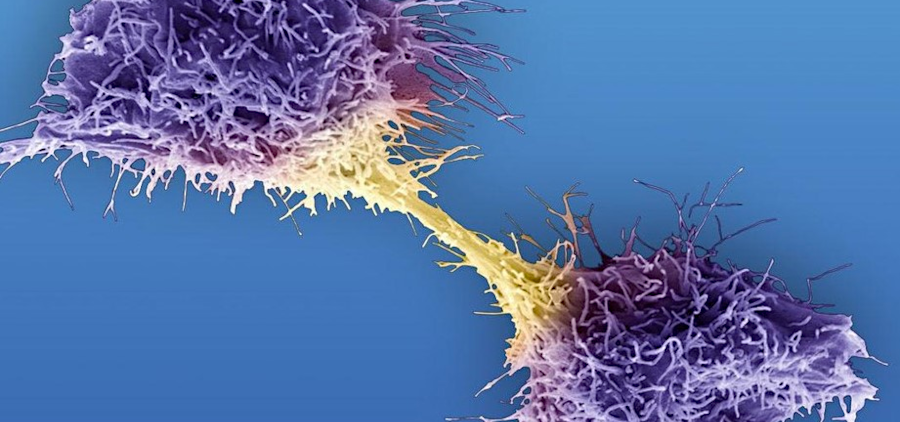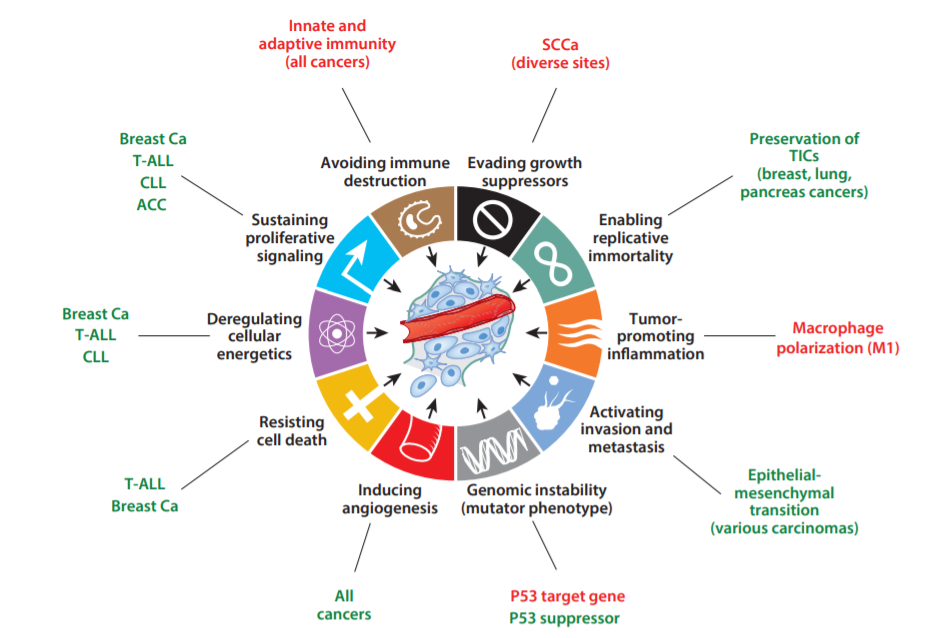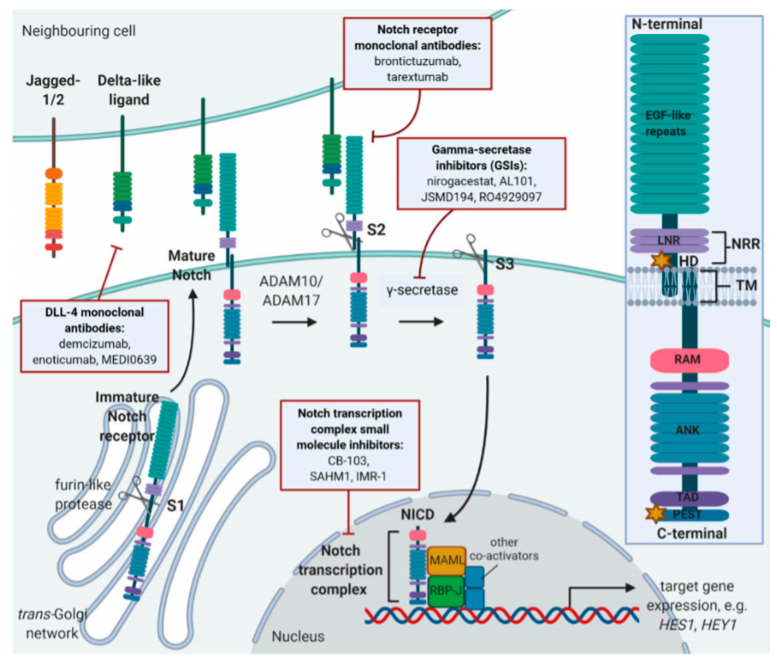
The Roles of Notch Pathways and Notch Signaling in Cancers
Notch signaling regulates a diverse array of functions in the hematopoietic system and other tissues, including lineage commitment, differentiation, cell cycle progression, and maintenance and self-renewal of stem cells. The Notch receptor was first identified by Thomas Hunt Morgan in 1917 with the observation of a Drosophila strain, then cloned by Spyros Artavanis-Tsakonas and Michael Young decades later in 1980. Notch plays an important role in many types of cancer, particularly in the regulation of stem and progenitor cells.
The effect of Notch signaling is highly context-dependent. It is capable of acting as an oncogene or tumor-suppressor gene dependent on the presence of other genetic lesions and other factors. Multiple mutations in Notch genes are identified in a broad spectrum of cancers. They reflect various roles for Notch in different cancer contexts. Remarkably, functional studies implicate the importance of Notch signaling in all of the hallmarks of cancer (Exhibit 1), roles that range from oncogenic to tumor suppressive depending on cancer type.
Exhibit 1. Cancer hallmarks potentially in?uenced by Notch signaling. Positive (oncogenic) effects (green) and tumor-suppressive effects (red) are shown.

Notes: ACC, adenoid cystic carcinoma; breast Ca, breast carcinoma; CLL, chronic lymphocytic leukemia; SCCa, squamous cell carcinoma; T-ALL, T cell acute lymphoblastic leukemia; TIC, tumor-initiating cell.
Source: Annu. Rev. Pathol. Mech. Dis. 2017. 12:245–75
Notch pathway activation has been implicated in cancer (solid tumor and hematological cancers) and associated with more aggressive cancers. Gamma secretase is a protease (a type enzyme) complex responsible for Notch activation via cleavage of numerous transmembrane proteins, including amyloid precursor protein (APP), Notch, HER4, E-cadherin, N-cadherin, BCMA, and CD44. These substrates have been associated with a variety of diseases, including cancer and Alzheimer’s diseases. Hence, these provide a foundation and rationale for evaluating gamma-secretase and Notch as a therapeutic target.
Exhibit 2. Notch signaling and strategies for pharmacological targeting of this pathway

Source: Moore G. et al. Cells 2020, 9, 1503
There are numerous strategies to pharmacologically target Notch signaling, including Notch receptor monoclonal antibodies, ligand-targeted antibodies (e.g., DLL-4 antibodies), gamma-secretase inhibitors (GSIs), and Notch transcript complex small molecules. Among the multiple gamma-secretase/Notch inhibitors:
- Ayala Pharmaceuticals (AYLA)’ pan-Notch/gamma-secretase inhibitor AL101 is being assessed in an open-label Phase 2 clinical trial (Accuracy) for the treatment of recurrent/metastatic adenoid cystic carcinoma (R/M ACC) for patients bearing Notch-activating mutations.
- SpringWorks Therapeutics (SWTX)’ gamma-secretase inhibitor nirogacestat is evaluated in a registrational Phase 3 (DeFi) clinical trial for the treatment of desmoid tumors.
- Cellestia Biotech (Private)’s pan-Notch inhibitor CB-103 is evaluated in a Phase 1/2A study in adult patients (pts) with advanced or metastatic solid tumors and hematological malignancies characterized by alterations of the Notch signaling, including breast cancer, colorectal cancer, cholangiocellular carcinoma, sarcoma, desmoid tumor, adenoid cystic carcinoma, non-Hodgkin lymphoma, and malignant glomus tumor.
Suggested Content:
Genprex Virtual Roadshow (Video)
PDS Biotechnology C-Suite Interview (Video)
Neovasc C-Suite Interview (Video)
Subscribe to Channelchek’s YouTube Channel

Photo: Cancer Cells